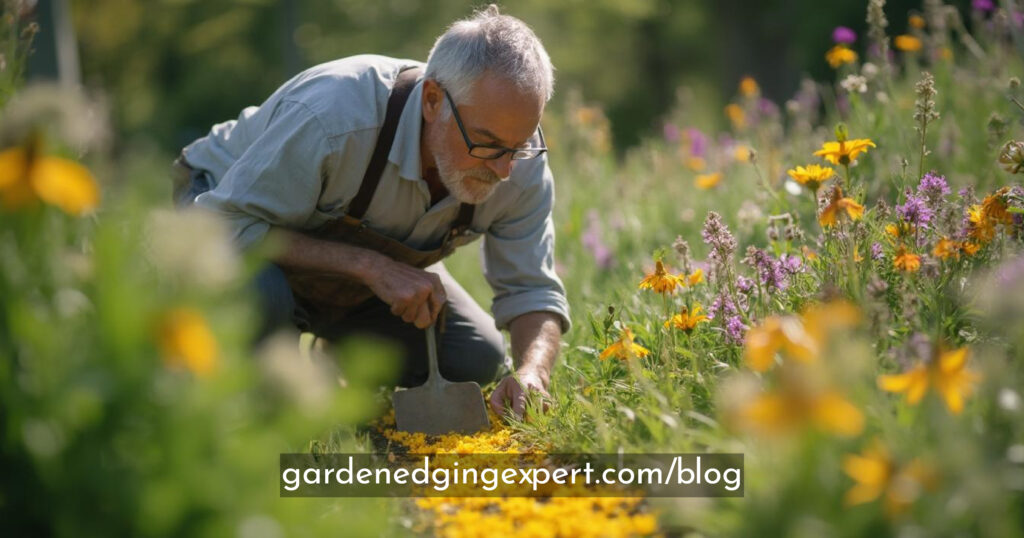GardenEdgingExpert.com/blog is a landscaping technique used to create clear, defined borders between different sections of your garden, such as separating flower beds from lawns or outlining pathways. It serves both functional and aesthetic purposes by preventing soil and mulch from spilling over, while also adding a polished, structured look to the garden. Edging can help prevent erosion, keep invasive plants in check, and guide foot traffic, making it easier to maintain a tidy and organized outdoor space. Overall, it combines beauty and utility, enhancing both the appearance and functionality of your garden.
Table of Contents
Popular Types of GardenEdgingExpert.com/blog Materials
There are several types of GardenEdgingExpert.com/blog materials, each offering its own unique aesthetic and functional benefits. Natural stone edging is a popular choice for a rustic and organic look that blends well with any garden style. Bricks and concrete pavers are durable and timeless, ideal for both traditional and modern garden designs. Metal edging, such as steel or aluminum, provides sleek, clean lines for a contemporary look, while wooden edging, like cedar or timber, gives a more natural, rustic feel. Recycled materials, like reclaimed bricks or plastic, are eco-friendly options that add creativity to your garden while minimizing environmental impact.
DIY vs Professional Installation: Which Option is Best?
When it comes to installing garden edging, you can either go the DIY route or hire a professional, depending on the complexity of the project and your budget. DIY edging is typically ideal for simpler materials like wooden planks, gravel, or pre-made stone borders, and it can be a fun and rewarding weekend project. However, if you’re looking for a more intricate design—such as custom concrete, elaborate metalwork, or large stone installations—it may be best to consult a professional to ensure precise installation and long-term durability. Professional installation guarantees high-quality work, but it can also come at a higher cost. Ultimately, the choice between DIY and professional installation depends on the scope of the project and your confidence in your own skills.
Trending Garden Edging Designs for 2024
In 2024, garden edging trends are leaning toward clean lines, minimalism, and eco-friendly solutions. Architectural simplicity is at the forefront, with straight edges and uniform designs creating a sleek, modern look. Materials like corten steel and polished concrete are popular for their durability and industrial appeal. Naturalistic designs are also trending, where materials like wood and stone are used to blend seamlessly into the landscape, giving gardens a more organic feel. Another emerging trend is the use of recycled materials, such as reclaimed bricks or rubber, which not only add a unique aesthetic but also appeal to eco-conscious gardeners. These trends reflect a shift towards functional, sustainable, and stylish garden spaces.

How to Choose the Right GardenEdgingExpert.com/blog for Your Yard
Choosing the right GardenEdgingExpert.com/blog depends on several factors, including your garden’s style, the materials that best suit your needs, and your budget. For modern, minimalist designs, metal or concrete edging provides a clean, sharp look. If you’re aiming for a natural, rustic feel, wooden or stone edging is a great fit. Durability is another important factor—materials like metal and stone are more long-lasting, while wood may require more maintenance over time. Additionally, budget plays a role, as some materials, like custom concrete or natural stone, can be more expensive, while recycled or DIY options may be more affordable. Ultimately, consider the aesthetic, maintenance needs, and durability to choose the best option for your space.
Maintenance Tips for Long-Lasting Garden Edging
Proper maintenance is essential to ensure that your garden edging remains both functional and visually appealing over time. Different materials require different levels of care. For instance, metal edging like steel or aluminum may need occasional cleaning to prevent rust, especially in areas with high moisture. Wooden edging, while natural and beautiful, may require more frequent attention, such as applying sealant to prevent rot and decay. Stone or concrete edging is more durable, but you may need to remove weeds or moss that can grow in the cracks.
FAQs About GardenEdgingExpert.com/blog
What is the purpose of GardenEdgingExpert.com/blog
Garden edging serves multiple purposes. It helps define clear boundaries between different areas of your garden, such as flower beds and lawns, keeping soil, mulch, and plants in place. It also prevents the spread of grass and weeds into unwanted areas, making garden maintenance easier. Additionally, edging enhances the aesthetic appeal of your garden, giving it a polished and organized look.
Can I install GardenEdgingExpert.com/blog myself?
Yes, many types of GardenEdgingExpert.com/blog, such as wood, plastic, or stone, can be installed as DIY projects. These materials often come in easy-to-install kits that allow you to complete the task in a few hours. However, for more complex installations, like custom concrete or intricate metal designs, professional installation might be a better option to ensure durability and precision.
How do I maintain GardenEdgingExpert.com/blog?
The maintenance required depends on the material. Metal edging may need occasional cleaning to prevent rust, while wood might require sealant application to protect it from moisture and decay. Stone and concrete edging are relatively low-maintenance, but you should watch for weed growth in any cracks. Regular inspections and prompt repairs will help keep your edging in good condition for years.
What are the best materials for GardenEdgingExpert.com/blog?
The best material depends on your garden’s style and your budget. For a modern look, metal or concrete is ideal, while natural stone or wood works well for more rustic or traditional gardens. Recycled materials, like reclaimed bricks, are great for eco-conscious gardeners looking to reduce environmental impact while adding a unique aesthetic to their space.
READ MORE : logo:8rneleok-fk= Roblox – Everything You Need to Know About Creating Logos in Roblox


